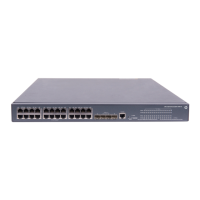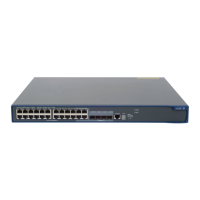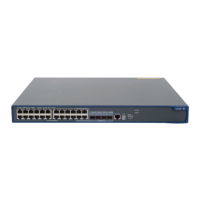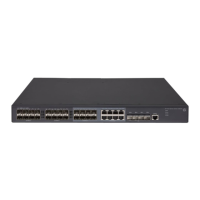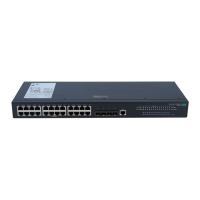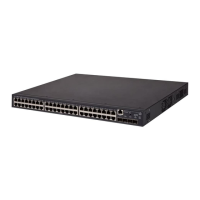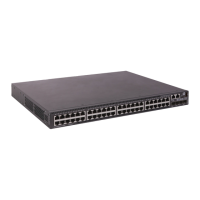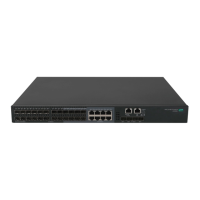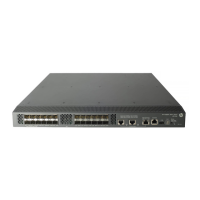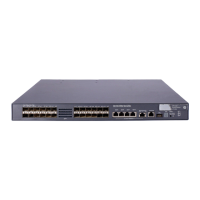27
• Configuring scheme authentication for console login
• Configuring common settings for console login (optional)
Configuration requirements
The following table shows the configuration requirements for console port login.
Ob
ect Re
uirements
Device No configuration requirement
Terminal
Run the hyper terminal program.
Configure the hyper terminal attributes.
The port properties of the hyper terminal must be the same as the default settings of the console port
shown in the following table.
Settin
Default
Bits per second 9,600 bps
Flow control None
Parity None
Stop bits 1
Data bits 8
Login procedure
1. As shown in Figure 4, use the console cable shipped with the device to connect the PC and the
device. Plug the DB-9 connector of the console cable into the serial port of the PC, and plug the
RJ-45 connector into the console port of your device.
Figure 4 Connect the device and PC through a console cable
ARNING!
Identify interfaces to avoid connection errors.
NOTE:
The serial port of a PC does not support hot-swap, so do not plug or unplug the console cable into or from
the PC when your device is powered on. To connect the PC to the device, first plug the DB-9 connector of
the console cable into the PC, and then plug the RJ-45 connector of the console cable into your device. To
disconnect the PC from the device, first unplug the RJ-45 connector and then the DB-9 connector.
2. Launch a terminal emulation program (such as HyperTerminal in Windows XP/Windows 2000).
The following takes the HyperTerminal of Windows XP as an example. Select a serial port to be
connected to the device, and set terminal parameters as follows: set Bits per second to 9600, Data
bits to 8, Parity to None, Stop bits to 1, and Flow control to None, as shown in Figure 5
through Figure 7.
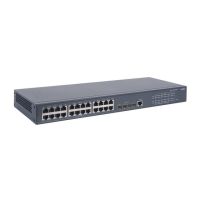
